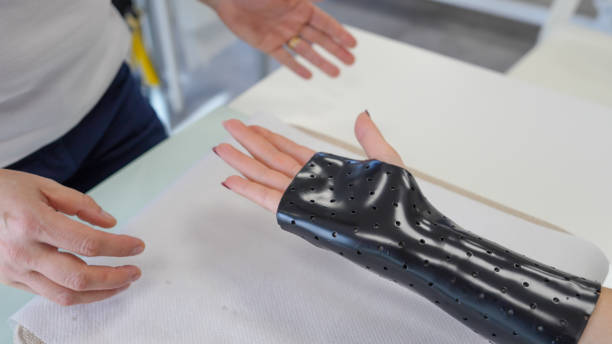Recovering from hand injuries often requires more than rest. Hand physiotherapy plays a key role in restoring motion, reducing pain, and regaining strength. Whether it’s for post-surgical rehab or managing long-term conditions, the right techniques can help you get back to your daily routine faster
Recovering from hand injuries often requires more than rest. Hand physiotherapy plays a key role in restoring motion, reducing pain, and regaining strength. Whether it’s for post-surgical rehab or managing long-term conditions, the right techniques can help you get back to your daily routine faster
Why Hand Strength and Flexibility Matter
Your hands perform hundreds of tasks each day—gripping, lifting, writing, typing. After an injury or surgery, weakness or stiffness can affect basic movements. Physiotherapy aims to:
- Rebuild muscle strength
- Improve joint flexibility
- Support tissue healing
- Prevent long-term stiffness
- Reduce the risk of future injury
Effective Physiotherapy Techniques for Hand Recovery
- Passive and Active Range of Motion Exercises
These exercises help keep the joints mobile. Passive movements are done with help from a therapist, while active ones are performed by the patient alone.
- Resistance Training
Therapists use resistance bands or light weights to gradually build muscle strength. Focus is often placed on fingers, thumbs, and wrists.
- Tendon Gliding Drills
These exercises are designed to prevent scar tissue from sticking to tendons. They are especially useful after surgery for carpal tunnel syndrome or tendon repairs.
- Joint Mobilisation
A therapist may gently move stiff joints to improve range. This is done carefully and may be paired with other stretching techniques.
- Sensory Re-education
This technique retrains the brain to interpret touch properly after nerve injuries. Patients are guided through textures, temperatures, and objects.
Common Physiotherapy Techniques for Hand Strength
- Resistance Exercises
Small weights or elastic bands are used to strengthen hand and forearm muscles.
- Finger Lifts
Lifting each finger individually while the hand lies flat improves joint control and strength.
- Grip Training
Using putty or hand grippers helps restore grip strength gradually.
Improving Flexibility Through Physiotherapy
- Stretching
Gentle finger and wrist stretches reduce tightness and improve mobility.
- Tendon Gliding
These exercises help the tendons move freely through the hand without catching or sticking.
- Joint Mobilisation
Hands-on techniques are used by therapists to loosen stiff joints.
When You Might Need a Thermoplastic Thumb Splint
A thermoplastic thumb splint is often used during early recovery to rest the thumb joint. It supports the area while reducing movement that could worsen pain or delay healing.
When a Thermoplastic Thumb Splint Supports Therapy
A thermoplastic thumb splint offers targeted support when the thumb joint is healing. It can help reduce stress on inflamed tendons and ligaments, allowing therapy to progress without setbacks.
Benefits of a Custom Thermoplastic Splint During Rehab
A custom thermoplastic splint is moulded to fit the exact shape of your hand. It’s often used to:
- Stabilise healing joints
- Limit harmful movements
- Allow safe motion in surrounding areas
- Improve compliance by offering better comfort
- Adapt over time as recovery progresses
Supporting Tools and Home Practice
In addition to in-clinic techniques, patients are often given tools to continue exercises at home.
Useful tools include:
- Therapy putty
- Hand grippers
- Foam blocks
- Stretch bands
- Finger exercisers
Conclusion
Improving hand strength and flexibility is crucial after injury or surgery. A structured physiotherapy plan, often supported by custom splints and guided exercises, can restore function and prevent long-term damage.
FAQs
- How often should I do hand exercises at home?
Typically, 2–3 times per day. Your therapist will give a tailored plan. - Can physiotherapy help with arthritis in the hands?
Yes. Targeted techniques reduce stiffness, pain, and improve grip. - Is a custom splint better than a generic one?
Yes. Custom splints offer a more precise fit, improving comfort and healing outcomes. - Can hand physiotherapy reduce chronic stiffness?
Yes. Targeted stretching and mobilisation help relieve stiffness and improve motion. - How long should I wear a splint each day?
It depends on your condition. Your therapist will advise based on your needs. - Is it safe to do hand exercises at home?
Yes, as long as they’re guided by a professional and done correctly.
- Hand Physiotherapy Techniques That Improve Strength and Flexibility
- Boost hand strength and flexibility with proven physiotherapy techniques. Learn effective exercises and tips for faster recovery and better mobility.
- therapist
Related posts:
 What Are the Key Considerations Before Getting Filler Injections?
What Are the Key Considerations Before Getting Filler Injections?
 Dr. Kami Hoss Gives Out the Truth About Brushing & Flossing-Protecting Your Teeth
Dr. Kami Hoss Gives Out the Truth About Brushing & Flossing-Protecting Your Teeth
 Can Atrial Fibrillation Be Cured? Latest Research & Insights
Can Atrial Fibrillation Be Cured? Latest Research & Insights
 Expert Lung Care in Jaipur: Why You Shouldn’t Ignore Breathing Issues
Expert Lung Care in Jaipur: Why You Shouldn’t Ignore Breathing Issues
 Control Fasting Blood Sugar with Confidence – Get Glycomet Online Today
Control Fasting Blood Sugar with Confidence – Get Glycomet Online Today
 Effective Weight Loss Clinic Killeen: Your Path to Lasting Results
Effective Weight Loss Clinic Killeen: Your Path to Lasting Results
 Top Reasons to Choose a Vitamin D3 Soft Gel for Everyday Health
Top Reasons to Choose a Vitamin D3 Soft Gel for Everyday Health
 Common Dental Emergencies and How Dentists Handle Them: Complete Guide
Common Dental Emergencies and How Dentists Handle Them: Complete Guide







